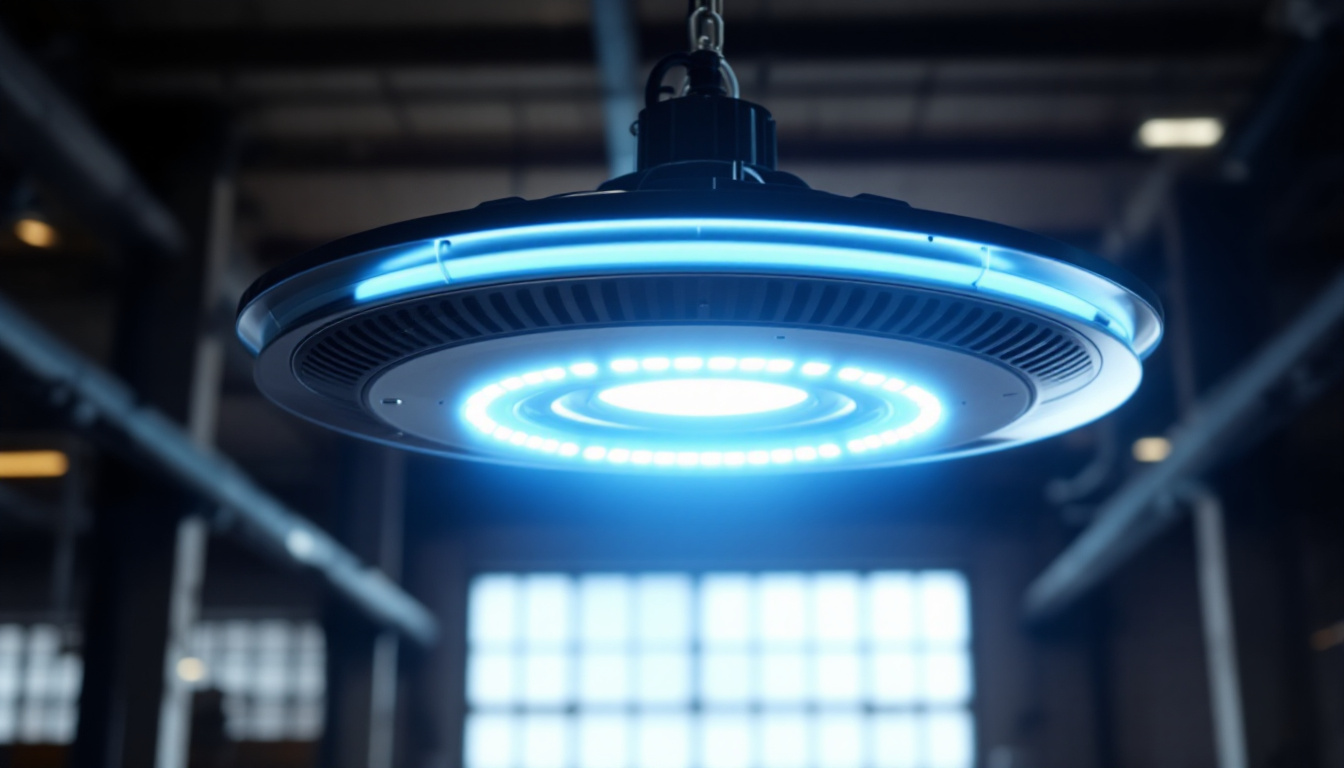
In the ever-evolving world of lighting technology, LED bulbs have emerged as a transformative force, not only enhancing energy efficiency but also reshaping the financial landscape for lighting contractors. As contractors navigate the complexities of modern lighting solutions, understanding the impact of LED technology on their bottom line becomes crucial. This article delves into how LED lights affect profitability, operational efficiency, and customer satisfaction, providing insights that can help contractors thrive in a competitive market.
LED (Light Emitting Diode) technology has revolutionized the lighting industry, offering a range of benefits over traditional incandescent and fluorescent bulbs. This shift has not only changed the way consumers illuminate their spaces but also how contractors approach their projects. As the demand for sustainable solutions grows, LED technology stands at the forefront, promising not just brighter spaces but also a brighter future for energy consumption.
One of the most significant advantages of LED bulbs is their energy efficiency. LED lights consume significantly less power than traditional lighting options, translating into lower energy bills for consumers. For lighting contractors, this presents an opportunity to market energy-efficient solutions that can enhance their reputation and attract environmentally conscious clients. The average LED bulb uses about 75% less energy than its incandescent counterpart, which is a compelling statistic that resonates with cost-conscious homeowners and businesses alike.
Moreover, the longevity of LED bulbs—often lasting up to 25 times longer than incandescent bulbs—means fewer replacements and maintenance calls. This durability can lead to substantial cost savings for both contractors and their clients, fostering long-term relationships built on trust and reliability. Additionally, as LED technology continues to advance, newer models are being developed that offer even greater efficiency and performance, such as smart LEDs that can be controlled remotely and programmed for specific lighting needs, further enhancing their appeal.
The growing awareness of energy conservation and sustainability has driven an increased demand for LED installations. Homeowners and businesses alike are seeking ways to reduce their carbon footprint, and lighting contractors can position themselves as leaders in this transition. By offering LED solutions, contractors can tap into a lucrative market that prioritizes energy efficiency. This trend is not just limited to residential spaces; commercial properties are also making the switch, recognizing the potential for significant savings and improved lighting quality.
Furthermore, many municipalities and organizations are implementing incentives and rebates for LED installations, making it financially attractive for clients to switch. Lighting contractors who stay informed about these programs can provide valuable guidance to their customers, enhancing their service offerings and boosting their bottom line. As energy regulations become stricter, staying ahead of the curve with LED technology can also help contractors avoid potential compliance issues, ensuring that their projects meet the latest standards and contribute to a more sustainable environment. This proactive approach not only benefits the contractors but also positions them as trusted advisors in the ever-evolving landscape of energy-efficient lighting solutions.
In addition to the benefits for clients, LED technology can significantly enhance the operational efficiency of lighting contractors. The transition to LED systems can streamline processes and improve project management.
With longer-lasting LED bulbs, the frequency of installations and replacements decreases. This reduction in labor-intensive tasks allows contractors to allocate their workforce more effectively, focusing on larger projects or expanding their service offerings. Consequently, this can lead to increased revenue opportunities and a more efficient use of resources.
Furthermore, the ease of installation for many LED systems—especially those designed for retrofitting existing fixtures—can minimize labor hours required on-site. This efficiency not only benefits contractors but also enhances customer satisfaction, as projects can be completed more quickly and with less disruption. As a result, contractors can build a strong reputation for reliability and speed, which can lead to repeat business and referrals, further solidifying their position in the market.
LED technology often comes with advanced features such as smart controls and dimming capabilities, which can be integrated into lighting designs. These features allow contractors to offer customized solutions that meet specific client needs, enhancing the overall value of their services.
Additionally, the ability to provide energy audits and detailed lighting plans can set contractors apart from competitors. By leveraging LED technology, contractors can present comprehensive proposals that highlight potential savings and the long-term benefits of investing in energy-efficient lighting solutions. This proactive approach not only demonstrates expertise but also fosters trust with clients, as they see the contractor’s commitment to sustainability and cost-effectiveness. Moreover, integrating software tools for project management can further streamline operations, allowing contractors to track progress, manage budgets, and communicate effectively with clients throughout the project lifecycle.
Moreover, the data collected from smart LED systems can be invaluable for contractors. By analyzing usage patterns and energy consumption, contractors can provide clients with insights that lead to even more tailored solutions. This data-driven approach not only enhances the contractor’s service offerings but also positions them as thought leaders in the industry, capable of guiding clients through the complexities of modern lighting technology.
In the competitive landscape of lighting contracting, customer satisfaction is paramount. LED technology not only meets the evolving demands of clients but also plays a crucial role in fostering loyalty and repeat business.
LED bulbs are known for their superior lighting quality, offering a range of color temperatures and brightness levels that can enhance the ambiance of any space. This flexibility allows contractors to create tailored lighting solutions that meet the aesthetic and functional needs of their clients.
Moreover, the instant-on capability of LED lights eliminates the warm-up time associated with traditional bulbs, providing immediate illumination. This feature can be particularly appealing for commercial clients who require reliable lighting for their operations. Satisfied clients are more likely to recommend contractors to others, leading to increased referrals and business growth.
By educating clients about the benefits of LED technology, contractors can position themselves as trusted advisors in the lighting industry. This consultative approach not only enhances customer satisfaction but also encourages clients to return for future projects.
Offering maintenance services for LED installations can further solidify these relationships. By providing ongoing support and ensuring that lighting systems operate at peak efficiency, contractors can create a steady stream of revenue while reinforcing their commitment to customer care.
While the benefits of LED technology are substantial, lighting contractors must also navigate certain challenges to fully capitalize on these advantages. Understanding these challenges can help contractors develop strategies to mitigate risks and enhance their business operations.
One of the primary challenges associated with LED installations is the initial investment cost. Although LED bulbs have become more affordable, the upfront expenses can still be higher than traditional lighting options. Contractors must be prepared to address client concerns about these costs and emphasize the long-term savings associated with energy efficiency and reduced maintenance.
Providing clients with detailed cost-benefit analyses can help illustrate the financial advantages of investing in LED technology. By demonstrating the potential return on investment, contractors can alleviate concerns and encourage clients to make the switch.
The rapid pace of technological advancements in the lighting industry can pose challenges for contractors. Staying informed about the latest developments in LED technology, smart lighting systems, and energy regulations is essential for maintaining a competitive edge.
Investing in ongoing training and education for staff can help contractors remain knowledgeable and adaptable. By fostering a culture of continuous learning, contractors can ensure they are equipped to meet the evolving needs of their clients and leverage new opportunities as they arise.
To maximize the impact of LED technology on their bottom line, lighting contractors must adopt effective marketing strategies that highlight the benefits of their services. A well-crafted marketing approach can attract new clients and reinforce relationships with existing ones.
In today’s digital age, having a strong online presence is crucial for lighting contractors. Utilizing social media platforms, email marketing, and search engine optimization can help contractors reach a broader audience and showcase their expertise in LED lighting solutions.
Creating informative content, such as blog posts, videos, and case studies, can position contractors as thought leaders in the industry. By sharing valuable insights about LED technology and its benefits, contractors can engage potential clients and build trust.
Building relationships with other professionals in the construction and design industries can also enhance marketing efforts. Collaborating with architects, interior designers, and builders can create referral opportunities and expand the contractor’s reach.
Participating in industry events, trade shows, and local business organizations can further enhance visibility and credibility. By actively engaging with the community, contractors can establish themselves as go-to experts in LED lighting solutions.
The transition to LED lighting represents a significant opportunity for lighting contractors to enhance their bottom line. By embracing the benefits of LED technology—such as energy efficiency, reduced labor costs, and improved customer satisfaction—contractors can position themselves for success in a competitive market.
While challenges exist, proactive strategies that focus on education, marketing, and relationship-building can help contractors navigate this evolving landscape. As the demand for energy-efficient solutions continues to grow, lighting contractors who adapt and innovate will not only survive but thrive in the new era of lighting.
Ready to enhance your bottom line with the most efficient LED lighting solutions? At LumenWholesale, we provide lighting contractors like you with spec-grade lighting products at unbeatable wholesale prices. Say goodbye to inflated markups and hello to a vast selection of industry-standard, high-performance lighting that will impress your clients and boost your profitability. With free shipping on bulk orders, you can stock up on premium lighting without any hidden fees. Elevate your lighting game and give your projects the quality they deserve. Discover the ideal mix of quality, affordability, and convenience at LumenWholesale – Wholesale Lighting at the Best Value.

Discover the essential insights lighting contractors need about Round UFO High Bay lights.

Discover how American-made light fixtures are revolutionizing the lighting industry, offering contractors unparalleled quality, innovation, and sustainability.

Explore the future of lighting design and installation with innovative outlets for light fixtures.

Illuminate your projects with expert insights! Discover essential tips and considerations for lighting contractors working with outdoor string lights, from installation techniques to design trends, ensuring every space shines brilliantly..